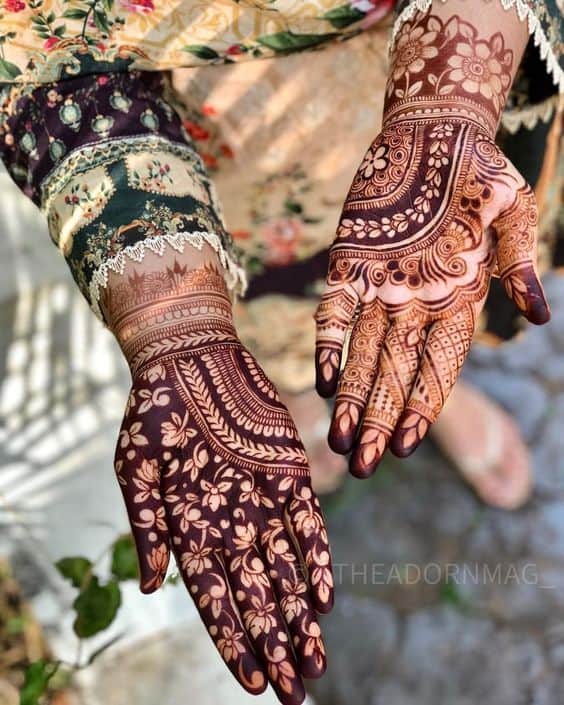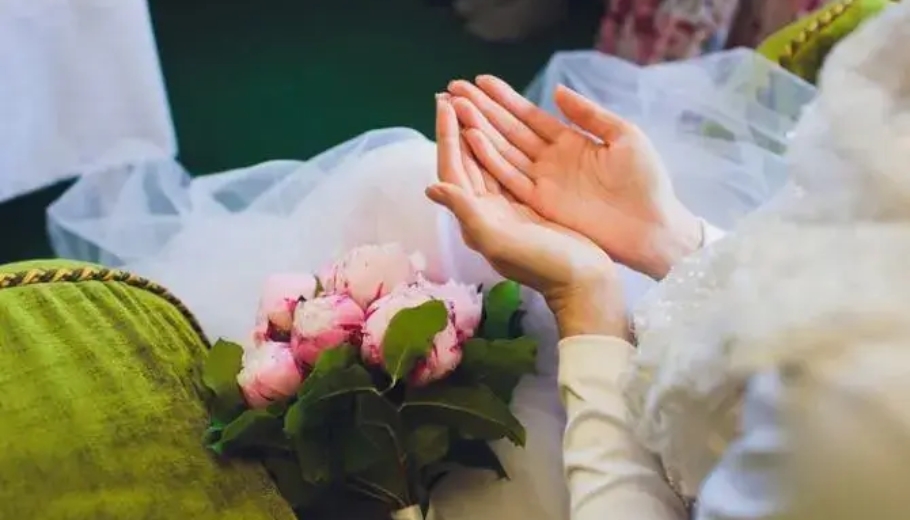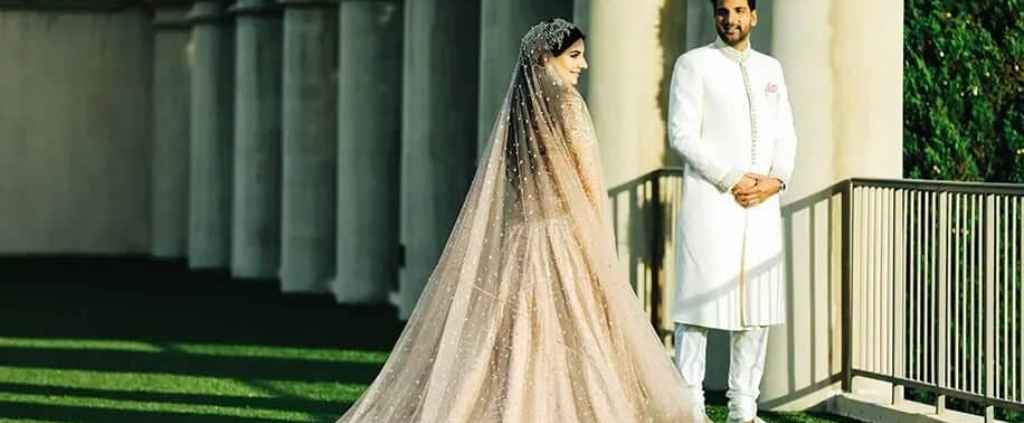The Rich Traditions of Arab Wedding
Step into the world of Arab wedding traditions, where centuries-old customs and contemporary celebrations seamlessly merge.
In this blog, we’ll unravel the rich tapestry of rituals, ceremonies, and the unique elements that make Arab weddings in Italy a truly distinctive experience.
Whether you’re planning your big day or simply curious about cultural practices, join me in exploring the vibrant and meaningful aspects that define Arab weddings.
A Brief History of Arab Wedding Traditions
Arab weddings have a long history deeply influenced by Bedouin customs and Islamic traditions. In modern times, arranged marriages are common but are no longer forced, as both parties must agree to the marriage. The bride and groom’s families play a significant role in planning and executing the wedding ceremonies.
Arabic Prewedding Traditions
Arabic prewedding traditions add a special touch to the wedding festivities.
Tolbe
One such tradition is the “tolbe” or “Tulba.” This event occurs at the bride’s house, with only the bride, groom, and their families in attendance.
During the tolbe, the groom and his family formally visit the bride’s home to ask for her hand in marriage. If both parents agree, they read from the Holy Quran and begin the wedding preparations. While the tolbe was once a necessity, many now view it as a gesture of respect rather than a true asking for the bride’s hand.
Khitbah (Engagement)
Khitbah, the cherished Arab engagement tradition, marks the formal declaration of a couple’s intent to marry. During this significant event, families discuss the union, setting the foundation for the upcoming nuptials. It is a moment of joy and commitment as the engaged couple embarks on the exciting journey toward their shared future.
Mahr
The dowry, known as “Mahr”, is a widely honoured tradition in Arab wedding. It is a gift, often in the form of gold, that the groom presents to the bride, symbolizing his commitment and financial responsibility.
Radwa
Another pre-wedding tradition is the “Radwa”, a small gathering where men ensure the women are pleased with the event. The father of the groom formally congratulates the couple. The Radwa typically takes place a day or two before the wedding.

Henna night
Henna nights are also a part of Arab wedding traditions in some countries. These nights involve the decoration of the bride and groom’s hands with intricate henna patterns. In modernized regions, henna nights have evolved into women-only parties where guests enjoy food, drinks, and dancing.
Arabic Wedding Attire
Arab wedding attire varies from traditional occidental attire, depending on the specific event. During the “Katb Al-kitaab,” the bride and groom dress conservatively.
Women are expected to cover their heads with scarves, while men wear traditional robes. For couples honouring traditional wedding attire, women wear long-sleeved dresses with a hijab, and men wear a ” kandura ” robe with a “zibban” cord.
Female wedding guests should wear knee-length or longer dresses, with some events requiring head coverings. Traditional Arab weddings demand more conservative outfits, while men can wear “kanduras” or suits.
Arabic Wedding Ceremony Traditions
The Arabic wedding ceremony, known as “Katb Al-kitaab” is a short and quiet event presided over by a sheik. The sheik lists the conditions of the marriage, advising the man on how to honour his wife and the bride on how to treat and honour her husband.
The bride, groom, and two witnesses, usually the eldest men, sign a marriage contract, making the union official.
GET IN TOUCH
Ready to plan the Arab
Wedding of your dreams?
Arabic Wedding Reception Traditions
The Arab wedding reception, called a “Walima”, is hosted by the groom’s family and paid for by the groom. It is a grand event that includes the families of the married couple.
The reception often features a DJ or live music, a spacious dance floor, a delectable spread of food and other Arab wedding traditions that make their celebrations unique.
Zaffe
One popular tradition at Arab weddings is the “Zaffe” a grand entrance made by the married couple.
The bride’s father typically walks her to the groom, and the couple moves their rings from their right to left hands, symbolizing their union. The Zaffe includes a procession to the reception of drummers and enthusiastic dancing, with guests joining in the celebration.
Dabke
The traditional Arabic wedding dance, “Dabke” is performed by professional dancers and enthusiastic attendees. Most Arab weddings involve dancing and joyful participation.
Buffet
Arabic wedding receptions feature a buffet-style setup with meats, stews, salads, fruits, and traditional sweets such as falafel, hummus, baklava, and baba ghannouj. The wedding cake cutting is a unique moment, where the bride and groom use a large sword, often a family heirloom, to cut the cake. Alcohol is not typically served at Arab weddings, but guests can enjoy Turkish coffee and various teas.
Music and Dance at Arabic Weddings
Traditional Music Genres and Instruments
Arabic weddings are vibrant celebrations filled with the rich sounds of traditional music, adding a touch of cultural elegance to the festivities. One of the most iconic elements is the diverse range of music genres across different regions.
In the Levant, you may encounter the melodious tunes of Dabke, a lively dance that often involves synchronized footwork.
Meanwhile, in North Africa, the beats of Raï and Chaabi may dominate the air, infusing the gathering with a distinct rhythmic energy.
The musical palette is complemented by a diverse array of instruments, such as the mesmerizing sounds of the oud, the soulful strains of the qanun, and the rhythmic pulse of the tabla, all coming together to create an atmosphere that resonates with cultural depth.
Popular Dance Forms During Weddings
Dance is an integral part of Arabic wedding celebrations, and guests are often drawn to the dance floor by infectious beats and joyful rhythms. One of the most prevalent dance forms is the Dabke mentioned above, where participants form a lively line and perform synchronized steps, creating a captivating visual spectacle.
In addition to Dabke, you may witness the graceful movements of the Belly Dance, a mesmerizing art form that originated in the Middle East. The diverse dance forms provide a dynamic and inclusive experience for everyone involved, fostering a sense of unity and joy that defines the essence of Arabic weddings.
As the music and dance intertwine, they weave a tapestry of cultural expression that elevates the wedding celebration to an unforgettable experience.
Related: How VB–Events caters to different religious and cultural ceremonies

Family and Community Involvement
Arab weddings are not just a union between two individuals; they symbolize the coming together of two families and communities. The role of the extended family in wedding preparations is paramount, reflecting the deeply rooted collective responsibility ingrained in Arab culture.
This collective effort is not merely a tradition; it’s a cherished practice that strengthens the bonds between relatives. From selecting the venue to planning the intricate details of the ceremony, every decision is a collaborative effort involving the wisdom and experience of family members.
The sense of collective responsibility extends beyond the immediate family, encompassing the broader community. In Arab weddings, neighbours, friends, and even distant relatives play crucial roles in offering support and assistance.
This communal engagement is a testament to the significance placed on togetherness, with everyone contributing to make the celebration memorable. It’s not uncommon for the entire community to rally behind the couple, showcasing the solidarity and shared joy that mark Arab weddings.
Arabic Postwedding Traditions
The conclusion of the Arabic wedding ceremony is marked by the “Barmet Al-aroos”. In this ceremony, the newlywed couple departs in a highly decorated car, followed by friends and family members who announce the union by playing loud music and honking their vehicle horns.
The timing of the couple’s departure from the reception varies depending on the region. Some ceremonies conclude with the couple leaving, while others allow guests to continue celebrating after the couple’s departure.
Exploring the vibrant tapestry of Arab weddings has been an enriching journey through time-honoured traditions and cultural diversity.
From the intricate rituals of the henna ceremony to the joyous celebrations of the Zaffa, each tradition we’ve delved into reveals the deep-seated cultural significance embedded in Arab weddings. The diversity among Arab communities, marked by unique customs and practices, serves as a testament to the rich mosaic of traditions within the region.
As we reflect on the captivating journey through these wedding traditions, it becomes clear that the enduring significance of Arab weddings lies not only in the rituals themselves but in the cultural unity and familial bonds they reinforce.
Through the lens of weddings, we glimpse the heart of Arab culture, where love, tradition, and diversity intertwine to create a tapestry of celebration that transcends generations.



